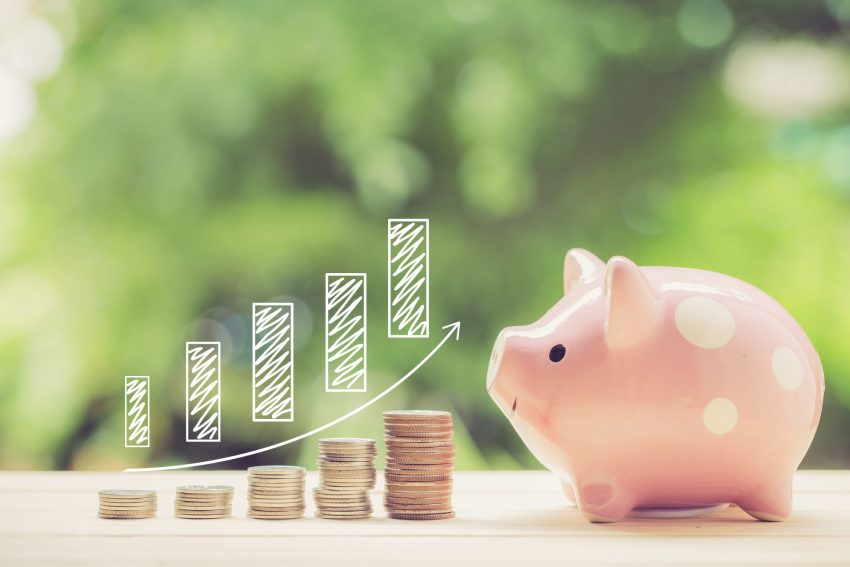According to a survey run by the American Psychological Association, 87 percent of Americans reported feeling stressed about the rising cost of day-to-day goods. Today we will be learning How to build a Six Month Emergency Fund
In many ways, a healthy emergency savings account can be your way out of a tough situation. And if you know how to automate your savings, you can grow your emergency fund on autopilot.
Imagine being able to buy a new fridge or replace your car battery without borrowing from friends, family, and acquaintances. Imagine being able to launch a new business or handle a period of extended unemployment without missing a beat financially.
Want to learn more? Read on to see how you can use tech and automation to give yourself financial security.

Contents
Set Your Goals
Dominican University observed that people with written goals had a tendency to accomplish more than those who didn’t have anything written down. Your emergency funds are no different in this regard. Here’s how you can get the ball rolling on your emergency savings.
1. Review Your Monthly Budget
On paper, the first step toward building your emergency budget is pretty simple:
All you have to do is assess your current financial situation.
But in practice, this is often a lot easier said than done. Are you receiving a regular paycheck or are you freelancing or working in a seasonal industry? Where is your money currently going?
During this initial evaluation, you may notice that you’ve been spending money without realizing it. Business Insider once reported that people were spending as much as $1,100 a year on month-to-month subscriptions. As such, this initial assessment process is an excellent opportunity to tidy up your budget as needed.
2. Decide How Your Savings Will Be Used
This step requires you to answer the question:
What does an emergency look like to you?
Your car could have a problem with its brakes. But if you already have a savings account for your car expenses, it probably doesn’t make sense to dip into your emergency account at the first sign of trouble.
Some folks might treat their emergency fund like an account of last resort. But for freelancers or individuals on an odd pay period, the emergency fund might be regularly used to cover essential bills until that next payment arrives.
Different people will have different ideas about when and how their emergency fund should be used. The important thing, however, is that you create a standard and stick to it.
3. Choose a Sustainable Dollar Amount
If you were one of the 66 percent of Americans who saved less than $5,000 in 2021, the temptation to play financial catch-up can be strong.
Even so, however, there’s a problem with saving every penny that you can spare:
The rest of your life doesn’t stop just because you’re putting funds into your emergency savings account — your regular bills, your entertainment costs, and your food-related expenses will still be there.
In many ways, saving money is like going on a diet. When you restrict yourself too much, it becomes far too easy to go overboard at the first opportunity.
To avoid running into this, you’ll want to set a dollar goal that you know you’ll be able to contribute every month. Or put another way, it’s better to put $200 a month into emergency savings every month than it is to put $300 in one month and $0 the next.
Lay Your Foundation
At this stage, you’ve finalized your budget, set parameters around the use of your fund, and you’ve settled on a regular dollar amount. Here’s how you can tackle the “how” part of building your emergency fund.
1. Create Your Designated Savings Accounts
Some people prefer to see all of their funds whenever they log into their bank accounts. Others save better when the money isn’t in their immediate purview. Regardless of where you fall on the spectrum, there’s one thing that most people with emergency savings accounts have in common:
Their emergency funds are held in dedicated savings accounts or sub-accounts.
In a perfect world, your savings account of choice will:
- Move money quickly
- Offer fairly high interest
- Be compatible with your primary account
The good news is that you don’t have to overthink this option. All you have to do is create a savings account that will be able to receive automatic funds and hold on to them until you need the money.
2. Set up Automatic Transfers
This is the part where all of the preparation you’ve done pays off. Why? Because it’s the “automated” part of your automated emergency savings plan.
As a general rule of thumb, there are two ways that you can approach this:
- Get a percentage automatically taken off by your employer
- Use the tools provided by your bank to have funds automatically sent to your emergency savings
For most people, it’s probably quicker and easier to just set up your own transfers. You’ve already got your emergency savings goal and your monthly, bi-weekly, or weekly transfer amount. All you have to do is enter your information while watching your savings grow.
3. Find a Spending Tracker
Many banks don’t stop at offering assistance with automatic transfers – they also have account monitoring tools and spending trackers that you can use to ensure that you’re sticking to your financial plan. But that isn’t the only purpose that these tools can serve.
You might be putting a couple of hundred dollars a month into your savings account now. In a few months or years, however, your circumstances might change.
Maybe you move to a cheaper state or start taking advantage of a few loyalty programs. Perhaps you get a bonus, a better-paying job, or a promotion at work. Regardless of the exact reasons, if you find yourself in a position where you can contribute more to your emergency fund, you don’t want to be guessing how much more you can afford to put in.
A simple tracker that monitors your expenses and your income can make it easy to ensure that you’re putting the right amount of money into your emergency savings account.
Practical Tips on Building Your Emergency Savings Account
Let’s say that you’ve taken all the steps that we’ve outlined here. You’ve got a super high-interest account and while you’re saving money and building that emergency fund, you want to do more. Here are some tips you can use to grow six months’ worth of savings in less time.
1. Get a Side Hustle
No matter which personal finance philosophy you subscribe to, there are only two ways to build a substantial savings account. You can:
- Spend significantly less
- Earn more money
After a certain point, spending less isn’t feasible for a lot of people. But if you can find the right side hustle, you can add an extra three to four figures a month to your emergency savings fund without having to downgrade your lifestyle.
If you don’t want to work retail or you’d prefer to put a few hours in here and there, there are a number of ways that you can make money at home. Some quick and easy work-from-home opportunities that we’ve pointed out include selling goods on eBay, turning your home into an Airbnb, and filling out online surveys. However, for some people, making a couple of food deliveries or driving for Uber is a much easier way to generate cash.
Whether you like working from home, working the odd weekend shift, or getting paid for indulging in your preferred hobbies, side hustles are a great way to boost your emergency account and your earning potential all at once.
2. Pay Yourself First
When you’ve got bills to pay and other expenses due, it can be tempting to say, “Let me save the money I have left after I’ve made all my payments.”. But for many folks, those leftover funds never actually materialize.
If you’ve got a predictable paycheck coming in, you can prioritize your emergency fund by taking your contribution out first. This way, even if you’re hit with the munchies at the grocery store, you don’t have to worry about whether or not you’ll still have enough for your emergency fund contribution.
3. Have a Tax Strategy
Remember what we said earlier about how people can develop side hustles to grow their bank accounts? You can put more money back into your pocket each year by taking advantage of tax savings opportunities.
Simple things like:
- Tracking how much you’ve spent on new equipment for your freelancing business
- Donating to charities and religious organizations
- Contributing to your retirement fund
… Can save you hundreds or thousands of dollars each year. It might not seem like a whole lot of money, but if you keep stashing away those increased tax returns, your emergency fund will grow in less time than you think.
In addition to the standard savings that can come with paying closer attention to your tax deductions and donations, you’ll also want to avoid getting hit with civil penalties. If you’re opting to earn more money through a side hustle or a second job, you’ll want to work with a tax preparation service that’s familiar with the ins and outs of helping people like you with their taxes.
Automate Your Savings and Watch Your Emergency Savings Fund Grow
Even when you’ve done your best to plan ahead, life can be unpredictable. If your company were to downsize or if you had to spend an extended period of time without employment, an emergency savings fund can make it possible for you to weather the financial storm. In addition, when you automate your savings, building up that emergency fund will quickly start to feel effortless.
Did you find this article helpful? Check out the rest of our site to read more of our personal finance articles.
Learn More
How to Move Out of Your Parents Home With No Money? (Best Tips)






1 thought on “Automate Your Savings: How to Build a Six-Month Emergency Fund”